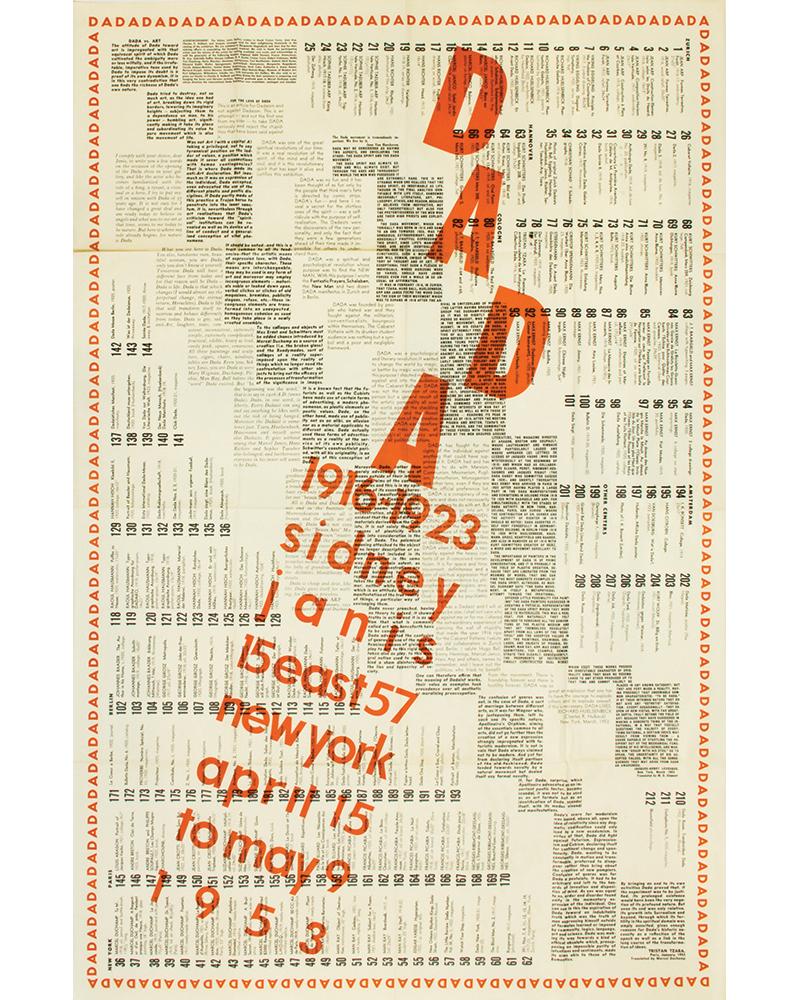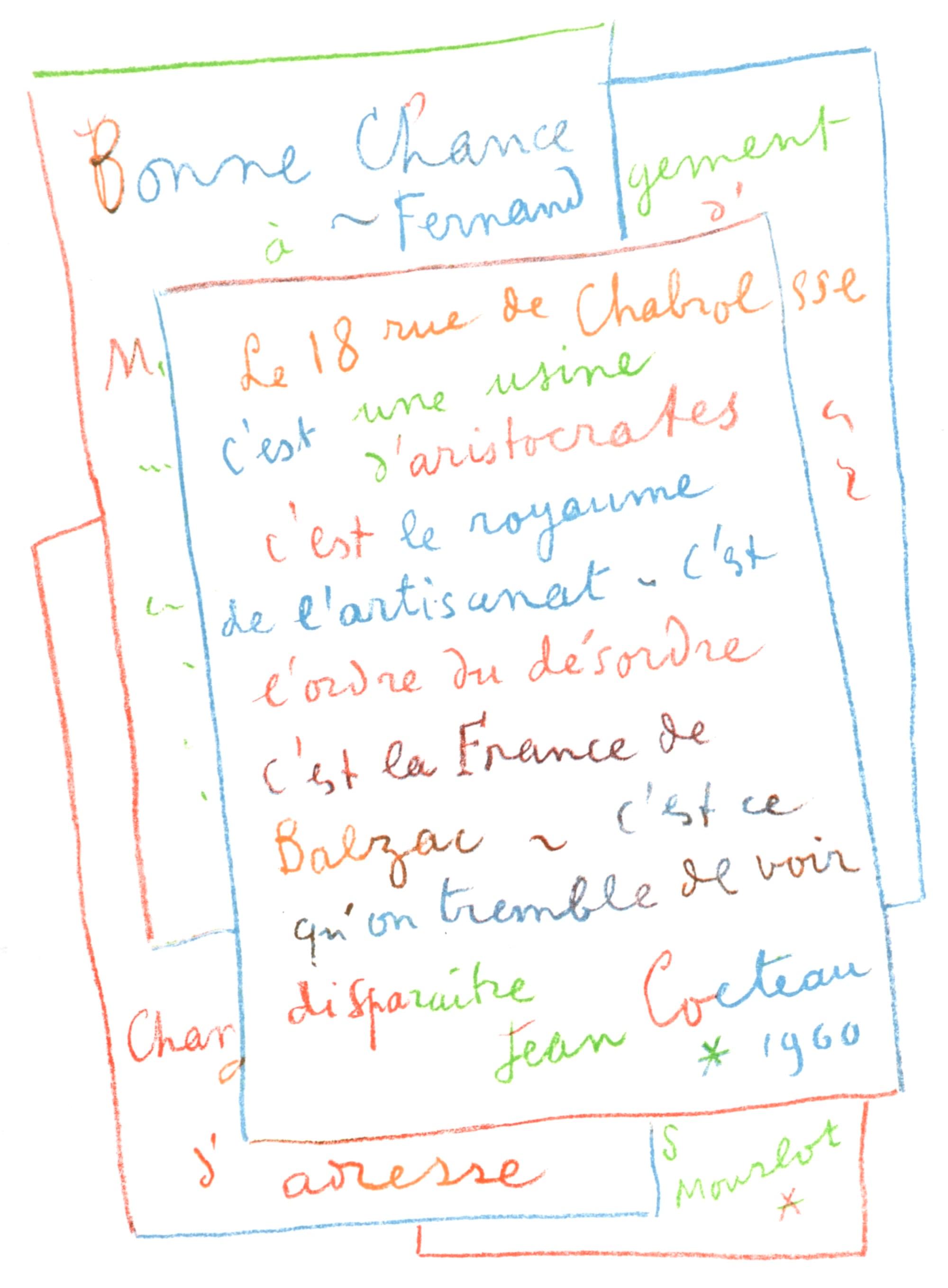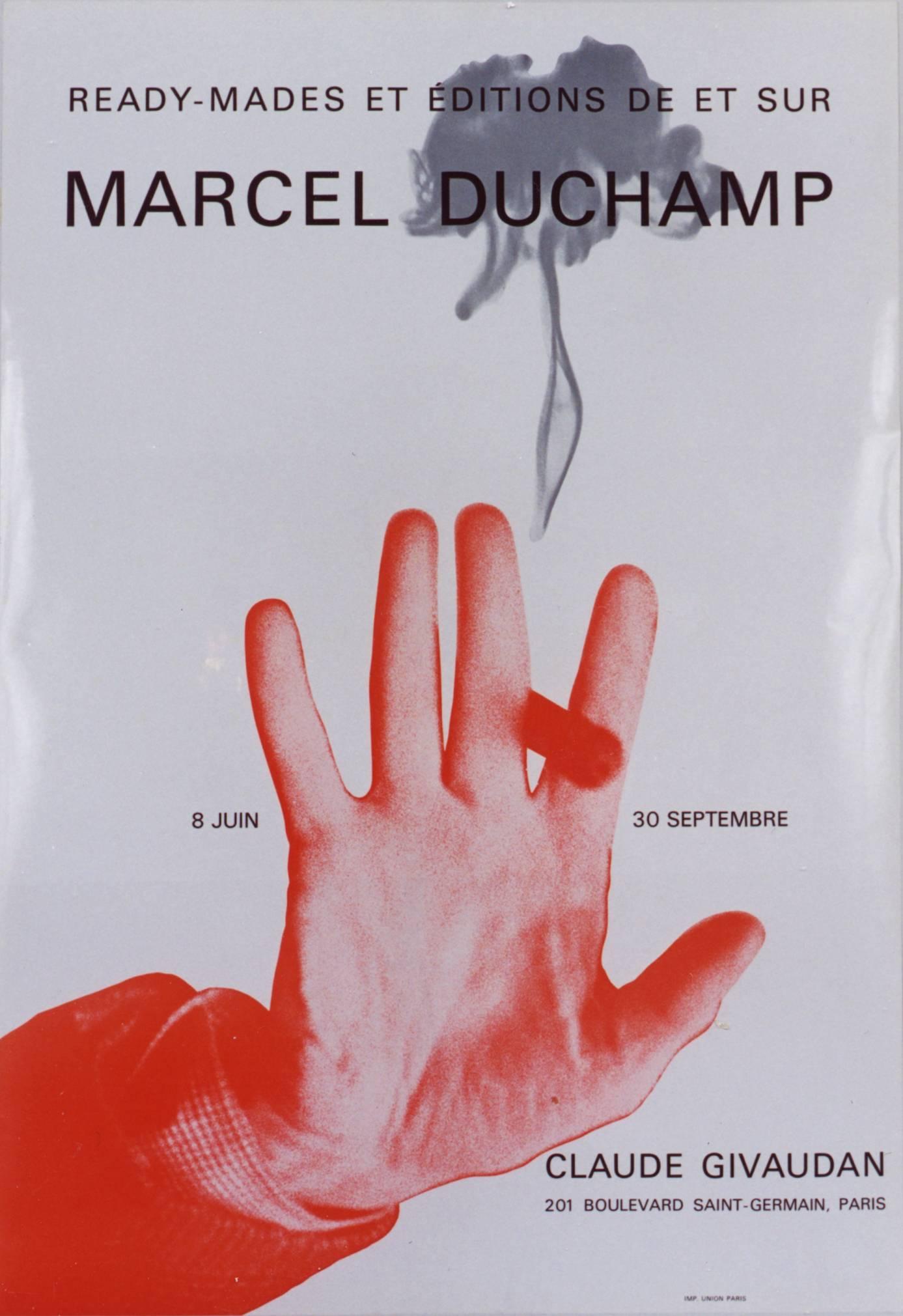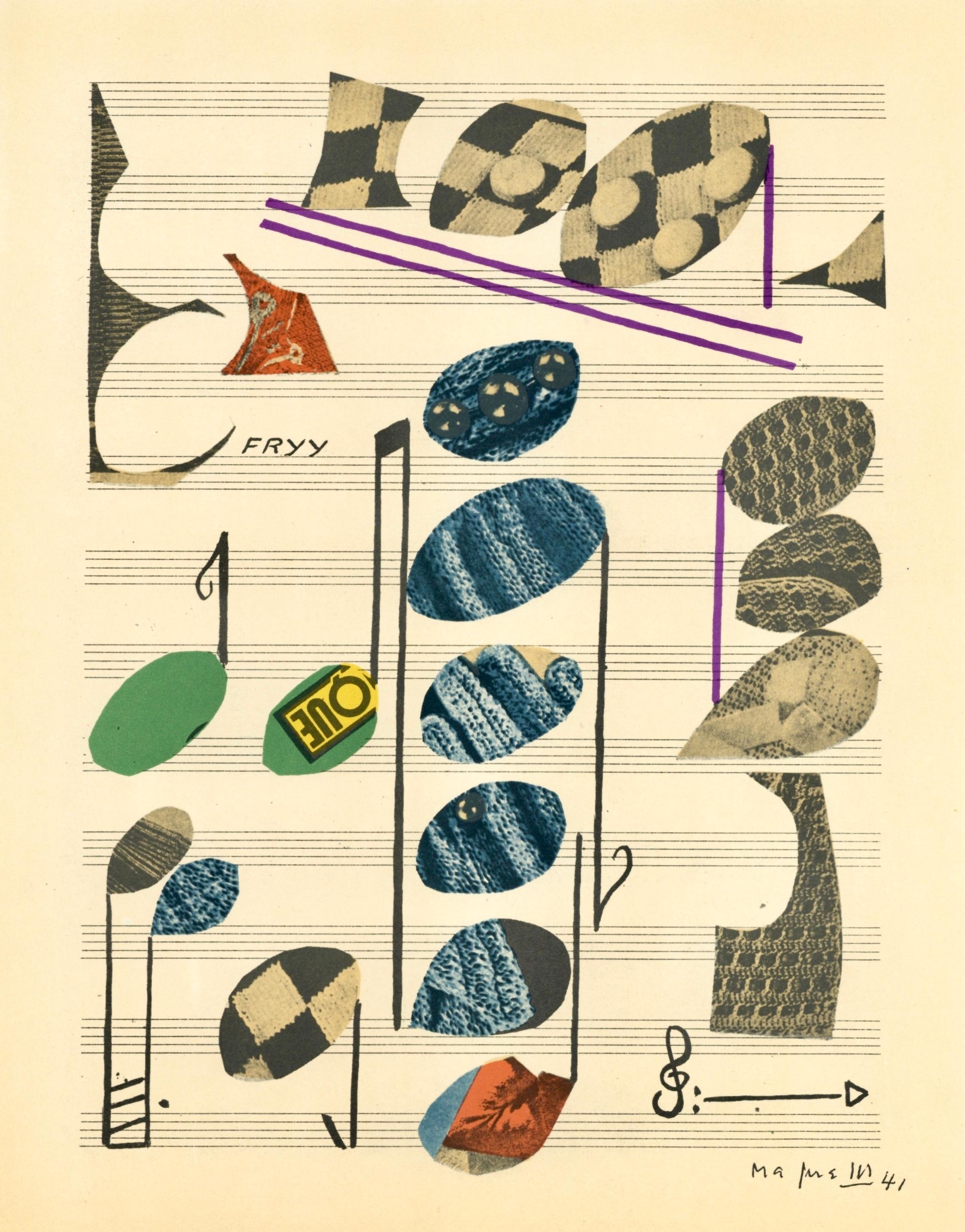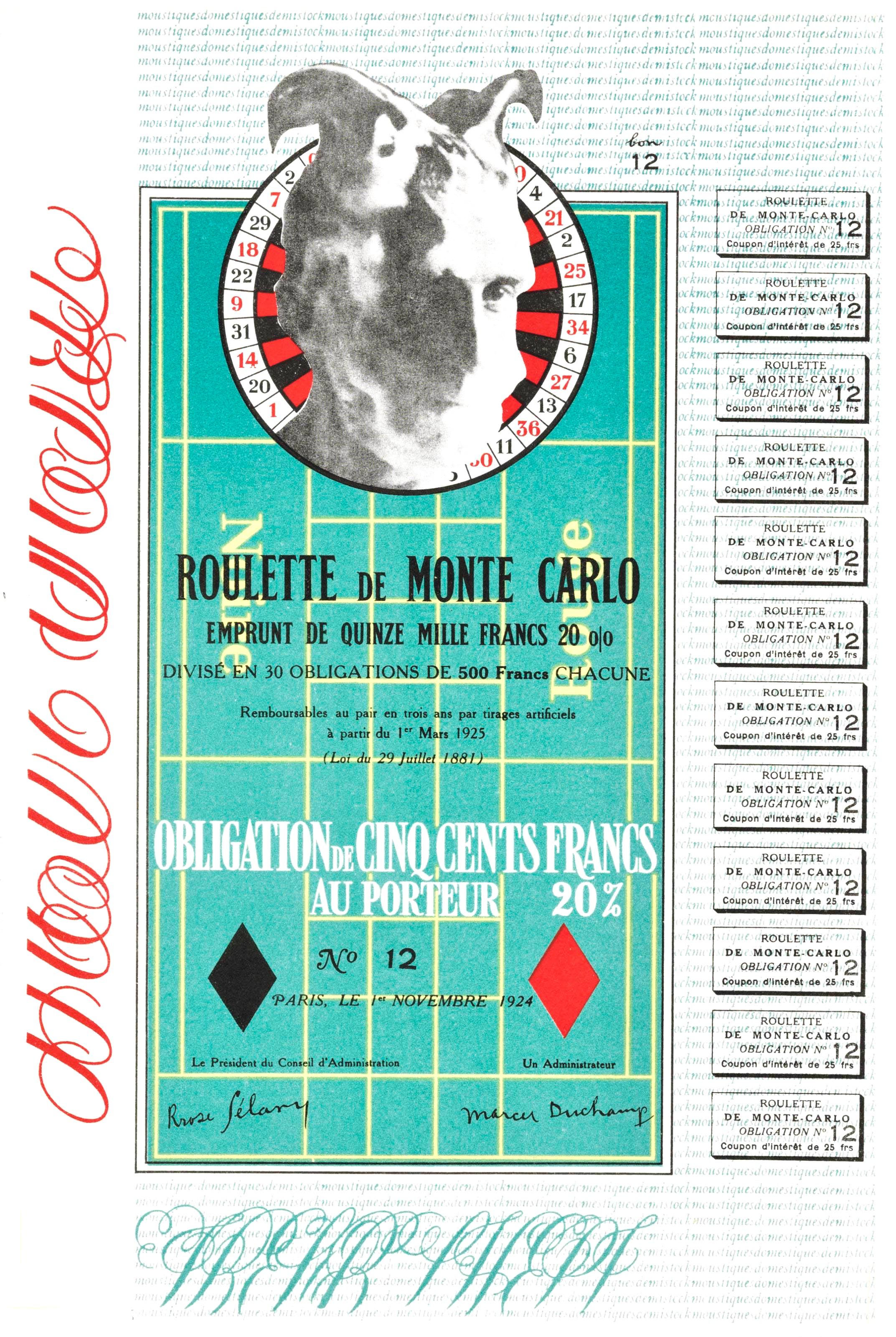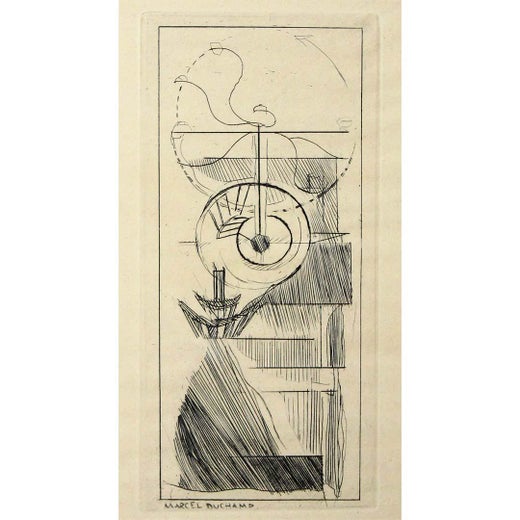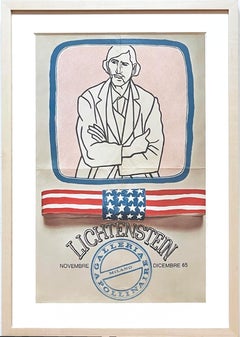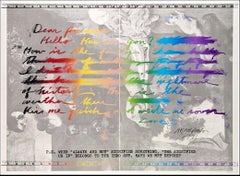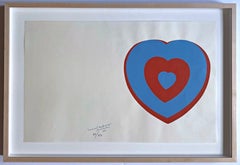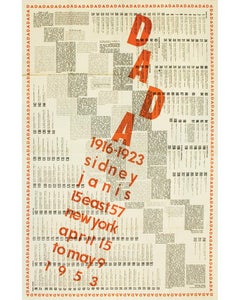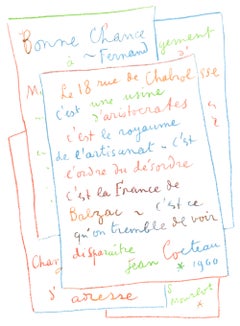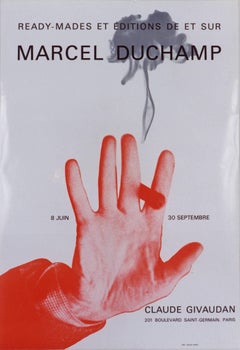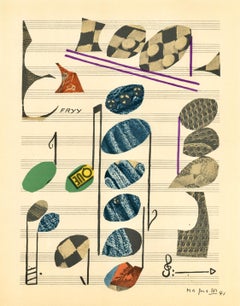Marcel DuchampHommage a Caissa (for the Marcel Duchamp Fund of the American Chess Foundation)1966
1966
About the Item
- Creator:Marcel Duchamp (1887 - 1968, French)
- Creation Year:1966
- Dimensions:Height: 26.25 in (66.68 cm)Width: 21.25 in (53.98 cm)Depth: 0.5 in (1.27 cm)
- Medium:
- Movement & Style:
- Period:
- Condition:In very good vintage condition; minor distress and age wear around cold leaf margin area.
- Gallery Location:New York, NY
- Reference Number:1stDibs: LU1745214151842
Marcel Duchamp
Marcel Duchamp was a French artist whose work is most often associated with the Dadaist and Surrealist movements. His output influenced the development of post-World War I Western art. Duchamp advised modern art collectors such as Peggy Guggenheim and other prominent figures, thereby helping to shape the tastes of Western art during this period.
A playful man, Duchamp challenged conventional thought about artistic processes and art marketing, not so much by writing but through subversive actions such as dubbing a urinal "art" and naming it Fountain. He produced relatively few artworks, while moving quickly through the avant-garde circles of his time.
“All in all, the creative act is not performed by the artist alone; the spectator brings the work in contact with the external world by deciphering and interpreting its inner qualifications and thus adds his contribution to the creative act,” said Duchamp.
Born on July 28, 1887, in Blainville, brother of the artist Raymond Duchamp-Villon and the painter Jacques Villon, Duchamp began to paint in 1908. After producing several canvases in the current mode of Fauvism, he turned toward experimentation and the avant-garde, producing his most famous work, Nude Descending a Staircase (No. 2) in 1912. Portraying continuous movement through a chain of overlapping Cubistic figures, the painting caused a furor at New York City's famous “Armory Show” in 1913.
Duchamp painted very little after 1915, although he continued until 1923 to work on his masterpiece, The Bride Stripped Bare by Her Bachelors, Even, an abstract work, also known as The Large Glass — composed in oil and wire on glass — that was enthusiastically received by the Surrealists.
In sculpture, Duchamp pioneered two of the main innovations of the 20th-century kinetic art and ready-made art. His "ready-mades" consisted simply of everyday objects, such as a urinal and a bottle rack. His Bicycle Wheel, an early example of kinetic art, was mounted on a kitchen stool.
After his short creative period, Duchamp was content to let others develop the themes he had originated; his pervasive influence was crucial to the development of Surrealism, Dada and Pop art.
Duchamp became an American citizen in 1955. He died in Paris on October 1, 1968.
Find a collection of authentic Marcel Duchamp prints, photography and other art on 1stDibs.
(Biography provided by David Barnett Gallery)
- ShippingRetrieving quote...Shipping from: New York, NY
- Return Policy
More From This Seller
View All1960s Pop Art More Art
Offset
1970s Abstract Abstract Prints
Screen
1960s Dada Abstract Prints
Screen, Pencil
1970s Modern Abstract Prints
Lithograph, Offset
1980s Contemporary Figurative Prints
Woodcut, Pencil
1980s Abstract Abstract Prints
Lithograph
You May Also Like
1950s Dada Prints and Multiples
Paper
1970s Modern Abstract Prints
Lithograph
1960s Post-Modern Abstract Prints
Offset
1970s Modern Abstract Prints
Lithograph
1960s Dada Prints and Multiples
Paper, Lithograph
1930s Dada Landscape Prints
Lithograph
Read More
A Treasure Trove of Surrealist Works Has Been Gifted to the Met
Donated by John Pritzker, the collection includes works by Marcel Duchamp, Man Ray and more.
Welcome (Back) to the Wild, Wonderful World of Walasse Ting
Americans are rediscovering the globe-trotting painter and poet, who was connected to all sorts of art movements across a long and varied career.
